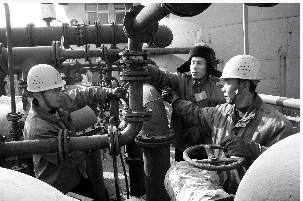Polycarboxylate Superplasticizer For example, self-consolidated concrete and slump retention beyond two hours without significant set time extension have been made possible with PCEs. I was fortunate to be on the R&D/marketing team for a major chemical admixture company that launched the first group of polycarboxylate-based admixtures in the 1990s. Like all new technologies introduced into the building industry, there has been a long learning curve which underscores the highly diverse set of materials and applications with concrete construction. This article summarizes a few key performance attributes which have been learned from both commercial concrete applications and the research laboratory. Some of the benefits provided by polycarboxylate superplasticizers have been discussed and previously published in The Concrete Producer. The term “polycarboxylate” actually applies to a very large family of polymers, which chemists can design to impart a special performance to concrete mixtures. Subsequent to the introduction of so-called general purpose PCE superplasticizers, new PCE products have been developed especially designed to provide high early strength and different levels of slump retention, as well as provide different capabilities to manage air contents in concrete. One such class of polycarboxylates has little impact on initial slump, but because of a time-release function built into the PCE polymer, concrete slump increases generally in a predictive manner as a function of mixing time (see Figure 1). Thus, such a product can be added at various dosages to an already admixed concrete to dial in slump retention as a function of job conditions (haul time, temperature, delay before discharge, etc). Very often, a superplasticizer will be formulated with a blend of two or more PCEs to achieve a combined performance of both early strength and long slump life. Researchers will continue to actively manipulate PCE polymer structure to meet the ever changing material and construction requirements. This remarkable strength difference, obtained by merely changing the superplasticizer type from a PNS to a polycarboxylate, was verified from a scientific study, and can be useful in reducing cement contents while still meeting strength specifications. Interestingly, the strength difference does not seem to be associated with increased heat of hydration, but rather is related to a denser microstructure produced by the combination of a calcium-based accelerating or corrosion-inhibiting admixture and polycarboxylate-based admixture. The PCE superplasticizer replaced both the PNS/lignin and Type A water-reducing products at about one-third the dosage rate. Also, note the 50% drop in AEA dosage rate with the PCE admixed concrete to obtain the same air content. To summarize, though the concrete industry has learned much about harnessing the versatility and understanding the limitations of PCE-based superplasticizers, chemists, working with concrete technologists, will continue to modify the polymer structure to achieve new capabilities for the production, placement and service life of concrete mixtures. by-Ara PCE based plasticizer Shanghai Hongyun New Construction Materials Co., Ltd , https://www.hongyunpce.com Recently, Qingdao Alkali Industry Co., Ltd. has launched a major carbon recycling upgrade project, integrating with its existing soda ash production facilities to effectively capture carbon dioxide from boiler flue gas and reuse it as a raw material for baking soda manufacturing. This innovative approach not only reduces greenhouse gas emissions but also significantly improves resource efficiency.
According to recent data, the comprehensive energy consumption of both light and heavy soda ash produced by Qingdao Alkali Industry is notably lower than the industry average. Specifically, the energy consumption for light soda ash is 90 kg of standard coal per ton of alkali below the industry benchmark, while that of heavy soda ash is 26 kg of standard coal per ton of alkali lower. These achievements have positioned the company at the forefront of the industry, ranking first and second respectively in energy efficiency.
This project highlights Qingdao Alkali Industry's commitment to sustainable development and green manufacturing. By leveraging advanced technology and optimizing production processes, the company is setting a new standard for environmental responsibility in the chemical sector. The success of this initiative not only benefits the company but also serves as a model for other manufacturers looking to reduce their carbon footprint and improve energy performance.
Recently, Qingdao Alkali Industry Co., Ltd. has launched a major carbon recycling upgrade project, integrating with its existing soda ash production facilities to effectively capture carbon dioxide from boiler flue gas and reuse it as a raw material for baking soda manufacturing. This innovative approach not only reduces greenhouse gas emissions but also significantly improves resource efficiency.
According to recent data, the comprehensive energy consumption of both light and heavy soda ash produced by Qingdao Alkali Industry is notably lower than the industry average. Specifically, the energy consumption for light soda ash is 90 kg of standard coal per ton of alkali below the industry benchmark, while that of heavy soda ash is 26 kg of standard coal per ton of alkali lower. These achievements have positioned the company at the forefront of the industry, ranking first and second respectively in energy efficiency.
This project highlights Qingdao Alkali Industry's commitment to sustainable development and green manufacturing. By leveraging advanced technology and optimizing production processes, the company is setting a new standard for environmental responsibility in the chemical sector. The success of this initiative not only benefits the company but also serves as a model for other manufacturers looking to reduce their carbon footprint and improve energy performance.The Polycarboxylate Family
Some 20 years ago, a new type of Superplasticizer based on polycarboxylate polymers (PCE) was commercially introduced to the North American concrete construction industry. Just as the application of naphthalene-based admixtures starting in the 1970s enabled significant improvements in the numerous engineering properties of plastic and hardened concrete, polycarboxylates have further extended the performance of concrete mixtures.